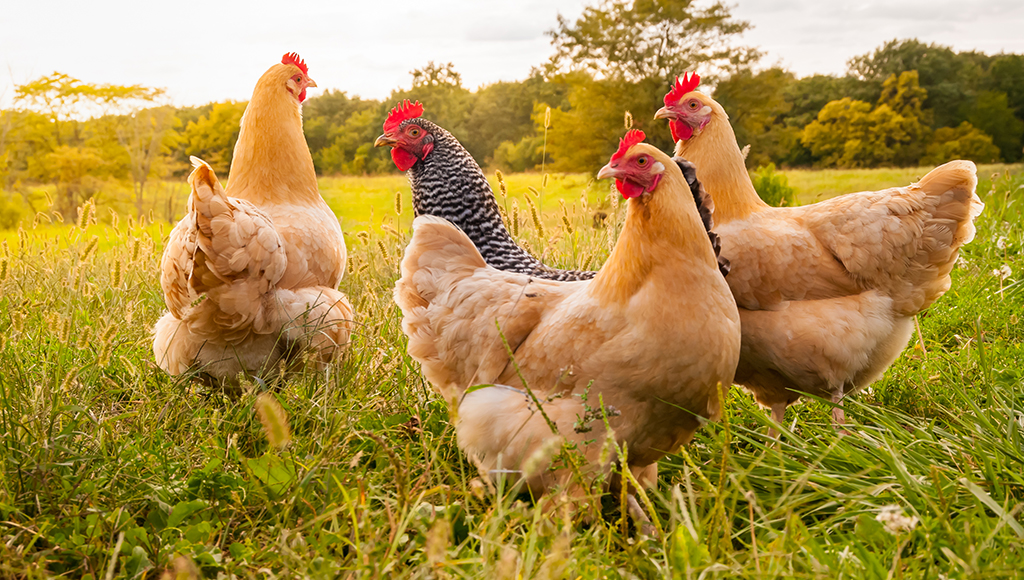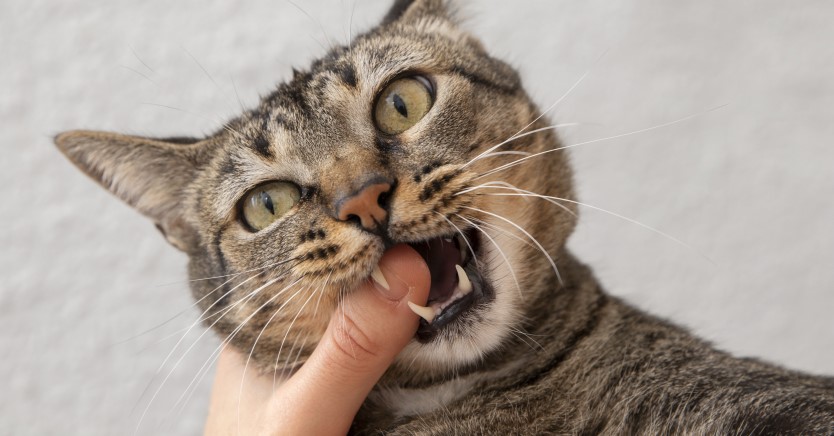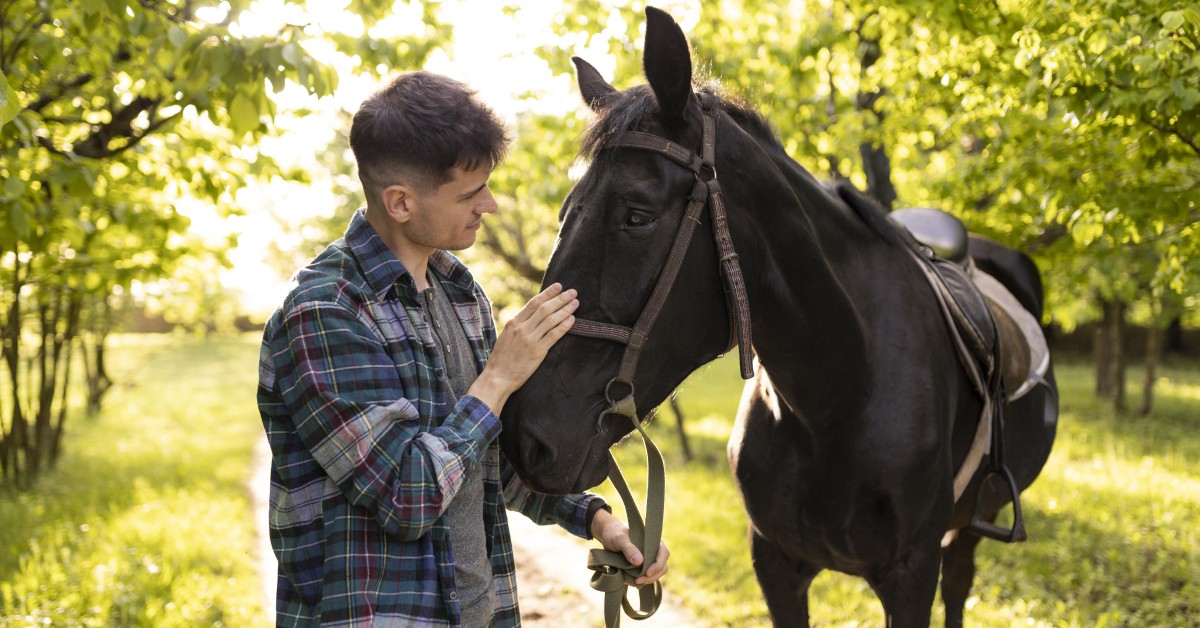From The Farm: How About A Chicken?
Raised with love and kindness, they'll be happy to have you at the top of their 'pecking order'.

Chickens may seem like an odd choice for a pet, but they can be very engaging, friendly and also very entertaining. As an added bonus, chickens also provide eggs and pest control for your garden. Chickens can easily be tamed and trained, even as adults, with positive reinforcements and food rewards. They will come running when they think you might have a treat, and will also learn to eat out of your hand; some may even allow you to stroke them. If you talk to your chickens, treat them well and handle them gently you will have faithful followers. However, for a truly bonded pet that will seek out your company, follow you around the yard and nestle in your lap for a nap you may want to hand-raised it from a baby chick.
Things to Consider
- Check your local zoning laws - in the country, and very rural areas this should not be an issue, but some cities have strict regulations on keeping "farm animals" as pets.
- A single banty hen might be allowed in a city apartment or house, but chickens need to be outdoors at least part of the day - they love to scratch in the dirt, take dust baths, and eat tender new shoots (remember that some house plants can be poisonous). Chickens also love to lay sprawled out in the sun.
- Be prepared, that although you can train a chicken to eat from your hand and come running when called, house-training a chicken, although not impossible, may prove to be very difficult.
Appearance
Chickens come in lots of different colors and varieties: brown, gold, red, white, gray, silver, speckled, spotted, checkered, dappled, smooth, fluffy, silky, grizzled, whiskered, bearded, bare legged, feathered legged, booted, high tailed, bushy tailed, long combed, rose combed, bare headed or with fanciful headdresses - just to mention a few.
Hens, with their subtle colors, lay eggs and cackle and cluck. Cockerels (roosters) are much more colorful and flashier, fertilize those eggs and crow loudly and often. Unless you want more baby chicks, don't get a rooster as a companion for your hen. Hens do not need a rooster to lay eggs, and without one, will be less stressed and harassed. Chickens come in various sizes, from one-pound banties to 10-pound Giant Jerseys. Some hens lay blue or green-shelled eggs, some spotted, some dark brown and others pearl white. Some lay eggs every day while others lay eggs only a few months of the year. Most hens start laying in their fifth or sixth month and are productive up to their third or fourth year, but some have been known to produce well into "old age". Pet chickens have an average lifespan of about 15 years.
Housing Requirements
When choosing a breed, consider the space they need. A single banty - or even two or three - do very well with a dog carrier for sleeping quarters and a small patch of dirt to scratch, while the larger laying breeds may need an covered coop with up to 6 square feet per chicken and at least some "free range" space. Chickens need perches at varying levels (they like to be as high as they can get at night), and a laying box. Chickens can wander around an established garden and feast on weeds and insects, doing some of your garden chores for you. Kept outside, they need a safe place to sleep where predators can't get to them, and if you live in an area prone to wild animals, they may need to be kept contained all the time. Hawks, coyotes, raccoons, weasels, rats, feral cats and loose dogs all consider chickens a tasty treat. Although chickens don't fly long distances, they can make it to the top of a fence or a low tree branch when startled, but usually head under a low bush to hide.
Hen or Rooster?
Whether you decide on a single chicken as a hand-raised pet or want to keep a small flock, make sure that the chicks have been vaccinated against Marek's and Newcastle disease, and come from a salmonella-tested breeding flock. Unless you purchase a "sex-linked" breed (one where the color is different for hens and roosters), you may be taking your chances with feed-store chicks. Reputable and experienced breeders can sex one-day old chicks, but after that, until they grow up, most breeds cannot be sexed, even by behavior. Some hens act very aggressive as youngsters, while some roosters are meek and gentle until their hormones kick in. Although some roosters can and do make nice pets, most can be quite aggressive and all are loud. It is nearly impossible to place an adult rooster in a new home. Sadly, most end up in a stew pot. Chicks from a "straight run" (non-sexed) feed store lot cost just a few dollars. Pre-sexed chicks from proven show stock (birds that have won prizes at displays and fairs) can be considerably more expensive.
Housing
Raising a baby chick is fun and easy. They are precocial birds, which means that they are able to walk and eat on their own soon after hatching. Tiny chicks need a heat source, a clean environment, food and water. You can invest in a chick brooder or build your own from a large glass aquarium or a wooden or cardboard box, using a shielded clip-on lamp and some screening or towels for a cover. The box should be approximately 24 inches long by 18 inches wide and about 12-to-18 inches tall. This is big enough for up to 6 small chicks. Clip the light on the edge and position it so it is about 4" above the flooring. Line the box with newspaper and fill with about an inch of wood shavings or sawdust, although paper towels work just as well and are easy to change out daily. Check the temperature under the lamp - it should be quite warm on your hand, but not hot - 90 degrees F is about right. Some breeders prefer red bulbs to minimize stress at night. The chick will sit under this lamp to stay warm and will wander out from under it to eat and drink.
Provide a shallow dish of water - no more than 1/2 inch deep. Add small stones to the water dish so the chick can't fall in and get wet or drown. Provide a shallow dish of "chick starter", available at the feed store. Change the water and food at least twice a day. The chick will peep loudly when cold or hungry, and make little chirping sounds when happy. Handle minimally for the first few days, as tiny babies are delicate and stress out easily. As the chick gets older, provide more and more one-on-one time. Cup your hand over the baby as you sit quietly, feed it little pieces of corn, berries, live small mealworms and other treats from your hand while saying its name, and within a very short time the little chicken will associate your voice with food and comfort and will come to you every time you call. At about 4-5 weeks of age the baby can go outside, supervised, and at about 8 weeks should be old enough to not need the lamp any more. At about 5 months the chick can stay in the outside pen overnight. If you plan to have the chicken sleep inside, start placing it in the carrier at nights at around 2-3 months of age. Chickens are creatures of habit and tend to choose the same area to perch and sleep every night.
Feeding
As adults, feed your chickens good quality layer's pellets or layer's mash (powder form) in the mornings and pre-mixed grain in the afternoon, with clean, fresh water available at all times. Pellets can be given in a feeder so the chickens can help themselves when hungry, while the grain can be scattered on the ground so that they can enjoy scratching for it. Chickens also like wheat, corn, safflower and shelled sunflower seeds. Table scraps are a welcome treat, but limit them to less than 1/4 of the diet or they may not get the proper nutrition.
Chickens will also eat the growing tips of grasses, and anything they can forage during their scratching activities. They provide a natural garden pest control, eating snails, slugs, earwigs and other insects, so only use non-toxic, organic pesticides on things they might eat. If kept in a coop, provide them with greens such as cabbage leaves, lettuce, spinach and/or green vegetables hung up so that they can peck at them when they want to. Hanging containers prevent debris from being scratched into the food and water. Also provide some poultry grit to help grain digestion in the gizzard, and crushed oyster shell for strong eggshells. To keep your chickens healthy and prevent odors, clean the coop regularly.
Good things
If you allow chickens to roam in your garden, it's best to monitor their activities, because they won't know the difference between a marigold or lettuce seedling and a weed. Alternatively, you can build a roving run (sometimes called a chicken tractor) for them, setting the wood-and-wire contraption in areas of the garden not currently under cultivation , and then till under what they leave you. Even in an enclosed coop and run, the hens will provide for the garden. Chicken manure, cleaned out of the coop with the bedding, can be applied to the dormant vegetable garden or added to the compost pile (fresh manure can burn plants in active growth).
Pet chickens are not as odd as they seem and those who have kept them rave about their qualities and attributes. Chickens have distinct and interesting personalities. In a flock they quickly establish a social order and watching this evolve in a group of growing fowl is highly entertaining. Raised with love and tenderness, they'll be only too happy for you to be at the top of their 'pecking order'.
Ready to start saving money on pet wellness care?
Then take a look at Mint Wellness, the pet wellness plan that provides fast reimbursement on routine pet care. Save on vaccinations, wellness exams, preventatives, dental, and more!
Learn More


